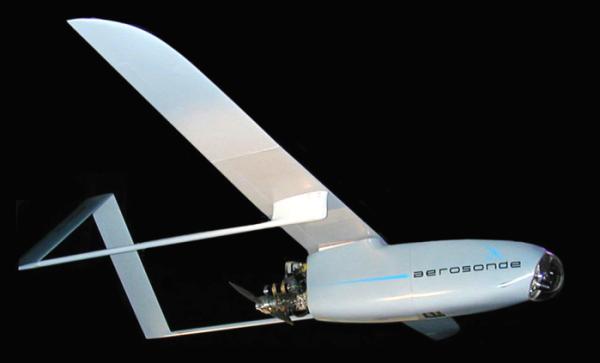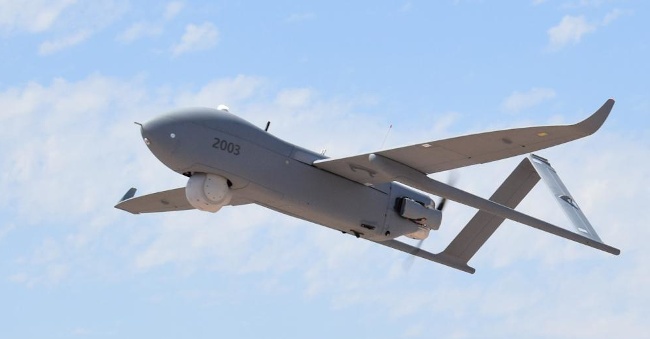AAI MQ-19 Aerosonde
The Aerosonde was originally developed as a very long endurance low-cost mini-UAV for meteorological observations in remote areas. Between 1995 in 1998, the UAV was developed in Australia by two Australian companies, the Australian Bureau of Meteorology, and the Insitu Group from the USA. The U.S. Navy's ONR (Office of Naval Research) was a co-sponsor of the program. In August 1998, an Aerosonde became the first UAV to cross the Atlantic when it covered more than 3200 km (2000 miles) in a non-stop flight of 26 h 45 min. In 1999, two companies were formed to market the UAV, Aerosonde Pty Ltd. in Australia and Aerosonde North America Inc. in the USA.
The Aerosonde can fly completely autonomous missions, including take-off and landing. It is equipped with a GPS waypoint navigation system, and has UHF and SATCOM datalinks for remote control. It has a payload capacity of 5 kg (11 lb), and can be fitted with a variety of sensors like TV or IR cameras, electronic jammers, etc.
 |
| Photo: © Aerosonde Pty Ltd. |
| Aerosonde |
In 2006, Aerosonde was acquired by AAI Corporation, which in turn become a subsidiary of Textron Inc. in 2007. In 2009, the designation XMQ-19A was allocated to the then current Aerosonde Mk 4.4 version. In 2012, the US SOCOM (Special Operations Command) awarded Textron a contract for the Aerosonde-G variant, a derivative of the Mk 4.7 with a more powerful heavy fuel engine and a ground control system shared with the RQ-7 Shadow system. By 2015, SOCOM and the U.S. Naval Air Systems Command were reportedly flying Aerosondes designated MQ-19 under service provision contracts. The current Mk 4.7 and 4.8 versions of the Aerosonde are significantly larger and heavier than the early versions, and share only the general layout with the original design.
 |
| Photo: Textron Inc. |
| Aerosonde Mk 4.8 |
Specifications
Note: Data given by several sources show slight variations. Figures given below may therefore be inaccurate!
Data for Aerosonde (1998) and Aerosonde Mk 4.7:
| Aerosonde (1998) | Aerosonde Mk 4.7 | |
|---|---|---|
| Length | 1.74 m (5.7 ft) | ? |
| Wingspan | 2.87 m (9.4 ft) | 4.40 m (14.45 ft) |
| Weight | 15 kg (33 lb) | Max: 42 kg (93 lb) |
| Speed | 150 km/h (93 mph) | 120 km/h (75 mph) |
| Ceiling | 6100 m (20000 ft) | 4480 m (14700 ft) |
| Range | 1850 km (1000 nm) | 140 km (75 nm) |
| Endurance | 30 h | 19.8 h |
| Propulsion | Piston engine | |
Main Sources
[1] Textron Systems Aerosonde Website
[2] "Unmanned Aircraft Systems Roadmap, 2005-2030", Office of the Secretary of Defense, August 2005
[3] Wikipedia: AAI Aerosonde
Back to Directory of U.S. Military Rockets and Missiles, Appendix 2
Last Updated: 10 January 2024